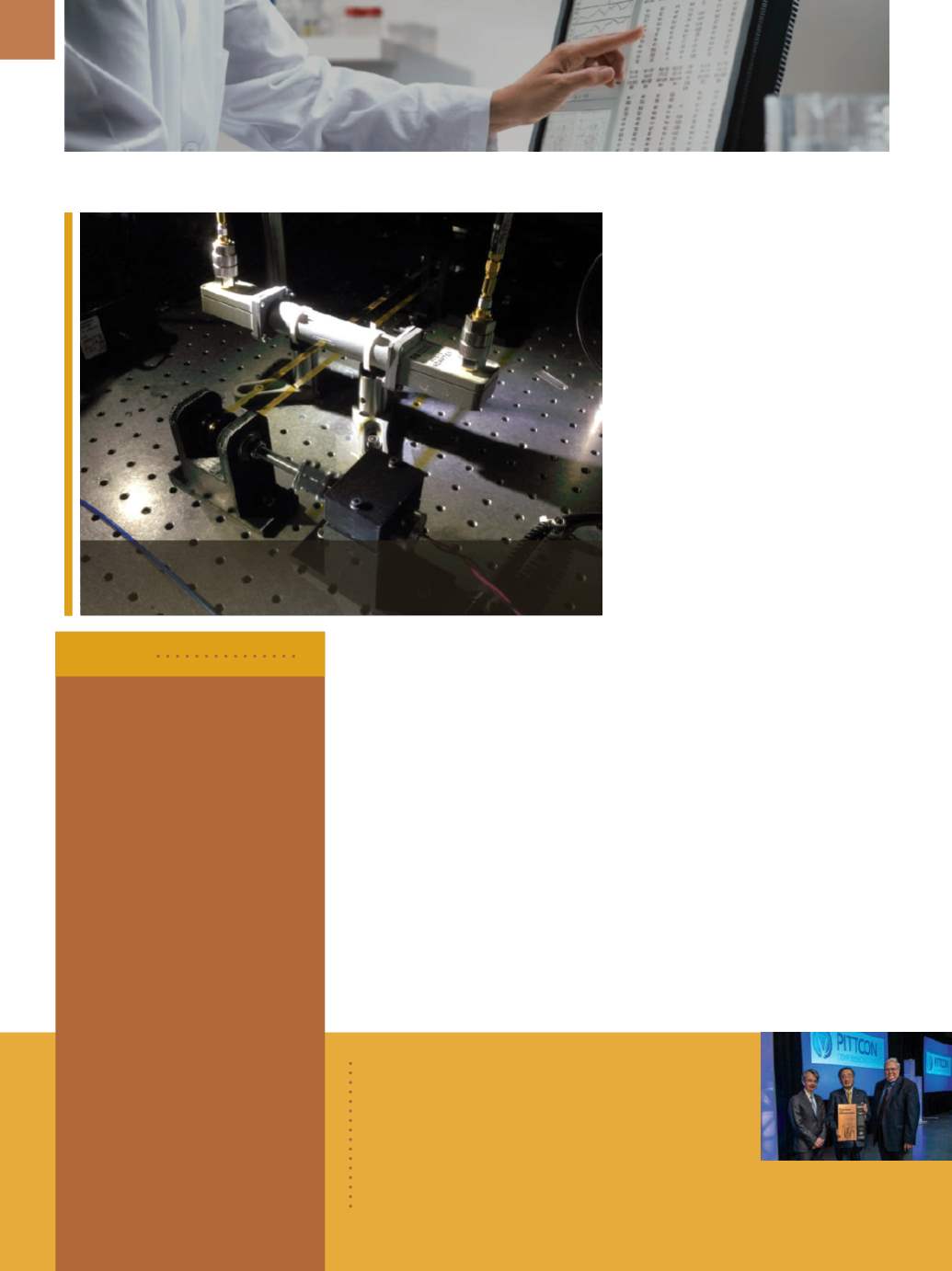

A D V A N C E D M A T E R I A L S & P R O C E S S E S | M A Y 2 0 1 6
1 2
TESTING | CHARACTERIZATION
polyimide tape through the cavity, the
change in resonance frequency corre-
sponded to the tape’s thickness.
Because polyimide’s electrical
properties are well known, this method
of cavity resonance could be used on
production lines to monitor whether or
not tape is being produced at a consis-
tent thickness. Real-time testing could
be used to tune the manufacturing
process without shutting it down or to
discard faulty product before it leaves
the factory. The entire product—not
just a sample—can be measured, and
because the method is nondestructive,
a batch that passes the test could be
sold.
nist.gov.HANDHELD NANOFIBER
SCANNER SEEKS LEAKS
Engineers at the University of
Utah, Salt Lake City, developed a fiber
composite material for a handheld
scanner that can detect small traces
of alkane fuel vapor, an odorless and
colorless ingredient in combustible
materials such as airplane fuel and oil.
The composite contains two nanofibers
that transfer electrons to each other.
When alkane is present, it blocks the
electron transfer, alerting the scanner.
Until now, there has been no way to
sniff out alkane in the field. Detection
required an oven-sized instrument in
a lab. Uses for the new device include
early leak detection on oil pipelines
and aircraft fuel tanks as well as secu-
rity applications. Many homemade
explosives, such as those used in the
REAL-TIME RESONANCE
TESTING ON A ROLL
Physicists at the National Institute
of Standards and Technology (NIST),
Gaithersburg, Md., developed a fast,
nondestructive testing method for roll-
to-roll manufacturing that can be used
in real-world conditions. A roll-to-roll
setup was used to run a strip of polyim-
ide plastic tape through a microwave
cavity. Electromagnetic waves build
up inside the metal cavity at a specific
resonance frequency determined by its
dimensions, but when an object enters
the cavity, the resonance frequency
changes according to the object’s size,
electrical resistance, and dielectric
constant. When researchers passed the
Thermo Fisher Scientific,
Tewks-
bury, Mass., acquired
Inel Inc.,
France, a provider of real-time x-ray
diffraction systems. The business
will be integrated into Thermo
Fisher’s analytical instruments
segment.
thermofisher.com.
Ceralink Inc.,
Saint Clairsville,
Ohio, expanded its materials test-
ing lab and will serve the aerospace
industry’s metal testing programs,
putting 16 new MTS Landmark
Generation test frames to work on
metals.
ceralink.com.
Zwick/Roell AG,
Germany, will
supply 19 testing systems to
Sapa
Extrusions North America,
Rose-
mont, Ill., an aluminum extrusion
producer. Sapa recently conducted
an internal audit of its North Amer-
ican tensile testing labs to enhance
product quality and standardize
testing procedures.
zwick.com,
sapagroup.com.
BRIEFS
The founders of
Jeol Ltd.,
Peabody, Mass., were hon-
ored at Pittcon 2016, held during March in Atlanta. The
Pittcon Heritage Award was presented to Gon-emon
Kurihara, Jeol president, “In recognition of their sci-
entific vision and pioneering leadership, directing the
post-World War II effort in Japan to build an electron
microscope and founding one of the greatest Japa-
nese instrumentation companies.”
jeolusa.com.
Electrical property measurements of a plastic tape (yellow) were taken using a
specially designedmicrowave cavity (white cylinder at center) and accompanying
electrical circuit. Courtesy of N. Orloff/NIST.
From left, Carsten Reinhardt,
Gon-emon Kurihara, and
William Sharpe. Courtesy
of Roy Engelbrecht.


















